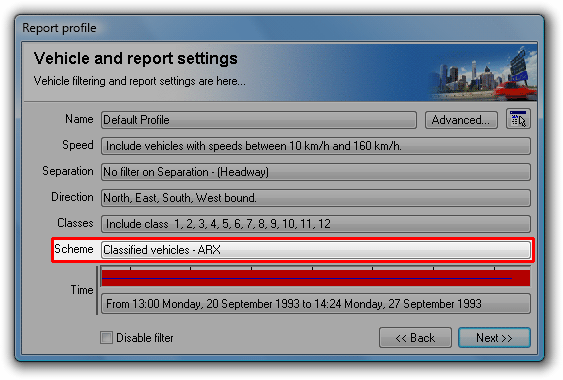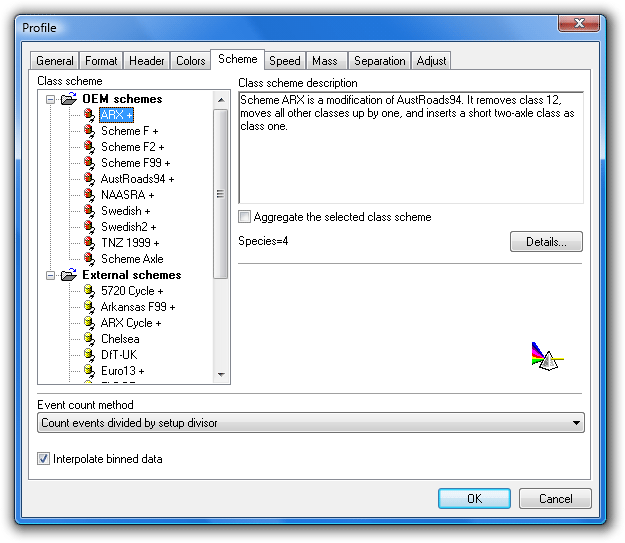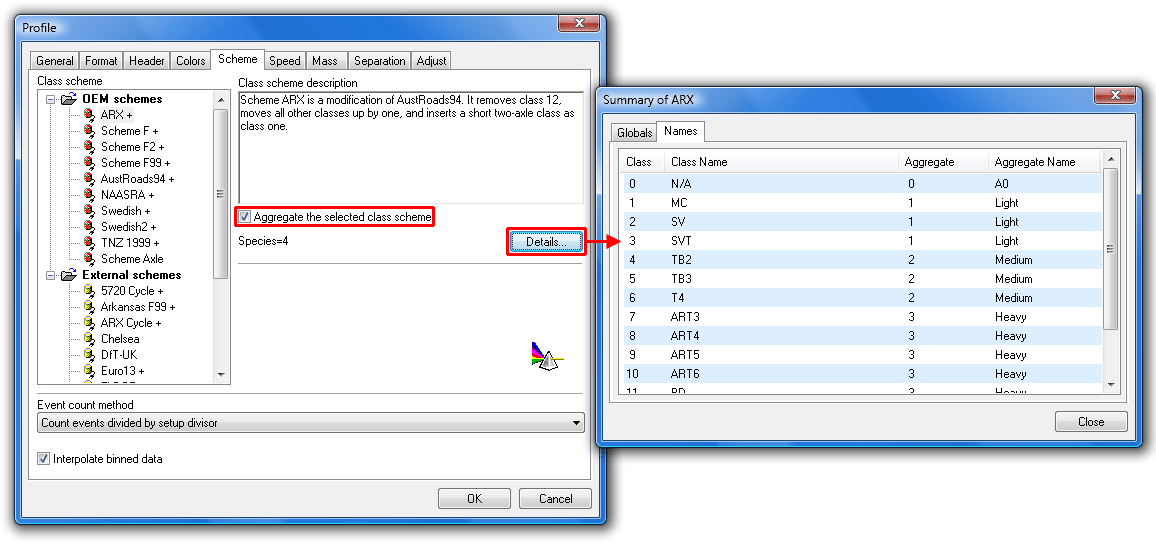MetroCount's time-stamped raw data collected using two parallel axle sensors enables MCReport to apply any axle-based classification scheme. Multiple schemes can be applied to the same data for different applications. As new standards and schemes are developed, they can be applied to existing data.
MCReport provides several built-in, highly optimised classification schemes called OEM Schemes, which are commonly used around the world. A range of user-defineable External Schemes are also provided.
Every scheme has two special classes: an unclassifiable vehicle class, and an unknown axle-group class. The unclassifiable vehicle class, usually designated as the last class, is a group of partitioned sensor hits considered to be a vehicle, but not matching any of the scheme's classes. The unknown axle-group class, designated as class zero, is a group of sensor hits that isn't considered a vehicle - usually fewer than two matching AB sensor hit pairs.
Every scheme has a set of classes that are enabled by default in a Profile's class filter, which usually includes all classes, except the two special classes. The unclassifiable vehicle class may be of interest for checking data quality, or suitability of a particular class scheme. A high percentage in this class may indicate a problem. Class zero can be generally considered as noise, and is only ever used for diagnostic purposes.
A classification scheme is selected in the Scheme page of a Profile's Advanced options. A shortcut to this page is by clicking on the Scheme button in a Profile's main dialog box, where the name of the currently selected scheme is displayed.
The available schemes are presented in a tree, divided into OEM and External schemes. Selecting a scheme will provide a short description. Note that changing between schemes will reset the Profile's class filter to the selected scheme's default.
Most classification schemes define a grouping of classes into similar types of vehicles. For example, schemes commonly group passenger vehicles into light, rigid trucks and buses into medium, and articulated vehicles into heavy.
Schemes that define a set of Aggregate classes have a + character after their name in the scheme tree. Selecting the Aggregate the selected scheme option will produce reports with the Aggregate classes instead of the base classes. The Profile's class filter will be automatically set to the defined aggregate classes.
The mapping of base classes into Aggregate classes can be viewed by clicking the Details button. The Names page lists all of the base classes for the selected scheme, and the Aggregate classes they map to. For the following example, base classes 1-3 map to Aggregate class 1, base classes 4-6 to Aggregate class 2, and 7-12 to Aggregate class 3. As a general rule, the unclassifiable vehicle class will map to the same Aggregate class number, in this case 13.
A report's header also displays the Aggregate class map in condensed form. For example, (ARX Aggregate (0 1 1 1 2 2 2 3 3 3 3 3 3 13 )) represents the previous example. Count along for the base class (starting at zero), and the number is the Aggregate class.
![[Note]](MTEHelp/images/note.png)
|
Note |
|---|---|
| The Aggregate mapping for OEM Schemes is not editable. Most classification scheme specifications define the Aggregates, just as they do the individual class rules. External Schemes are user-editable, and contain a section that sets the Aggregate mappings. | |



